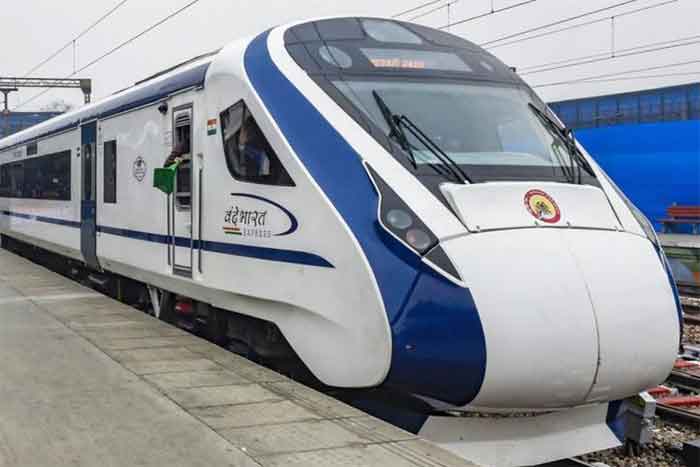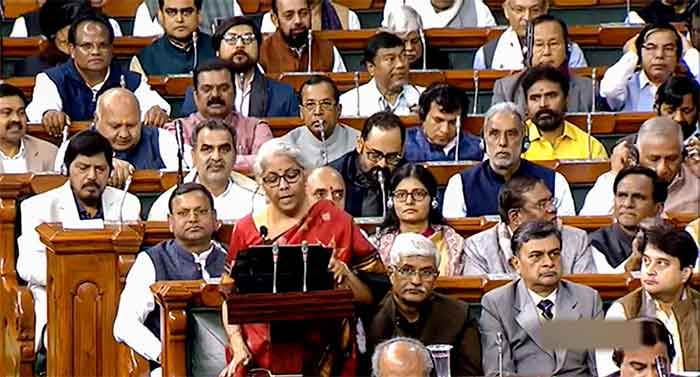
This year’s Indian Budget has allocated Rs 10 lakh crore (121.0 Billion US $) as capital expenditure for building huge infrastructure during 2023-24. Nearly one fourth of the capital outlay will be spent on constructing new roads and highways and another quarter to Indian Railways for running new high speed trains (like Vande Bharat), laying new rail tracks and 10 percent to state governments as loans for spending on infrastructure projects. Total budget allocations amount to nearly 3 percent of GDP for infrastructure building. The central question is – does the huge public expenditure kick starts economy, generates new jobs and promotes demand as promised by Finance minister or this again yet another neoliberal economic bonanza to benefit the super rich?
In classical economics it is presumed that Infrastructure spending will have beneficial effect on investments to economy. This would generate demand for inputs like coal, cement, steel and heavy machinery and creation of several new jobs both directly and indirectly, increasing income to poor. Thus testifying the “ Trickle Down “ effect prophesised by neoliberal economics. A World Bank study (Auguste Kouamé, Nov. 2022) estimates that every one rupee spent on building roads generates an additional Rs 7 in economic value. Same time the report says India will need to invest $840 billion over the next 15 years—or an average of $55 billion per annum into urban infrastructure . Infrastructure projects for example, construction of roads, highways facilitating improvement in transport of minerals and goods would create a stable consumer demand, prompting entrepreneurs to take risks and invest in building capacities. However, this principle in real world is not working. Private industry is not coming forward to invest and the promised benefits are not reaching poor and this needs to be examined thoroughly.
Despite made huge budget allocations for high capital expenditure, they failed to promote private investments and kick start the economy. The private investment rate is insignificant. Similar to much advertised nearly Rs. 2.0 Lakh crore Infrastructure Pipeline, devised a coupl of years ago. Also did not boost India’s GDP growth rate. Looking at the recent data provided by Economic Survey, during the last one decade the expected results were quite disappointing not achieved.
Chief reason being consumer demand remaining low due to lack of money in people’s pockets. With insignificant allocations to various employment generation (National rural employment scheme), food security, education, health, child and women welfare programmes and neglect of incentives to small scale industry the consumer demand for goods remained low. Of course, demand of luxury cars and residential villas is soaring, which indicates the rising disparities between rich and poor. In absence of consumer demand, the private industry lacks appetite to invest, expand production capacity. Neither a series of tax cuts and capital bonanza offered to private industry by Central government could not make private industry to invest and rise gross Capital Formation.
The ratio between Gross Fixed Capital Formation to GDP is an indicator for financial performance. The ratio, has actually dropped from 33 per cent in 2014-15 to 29 per cent in 2022-23. In this period, capital expenditure by the Centre (in subsequent annual budget s) constantly rose from 1.7 per cent to 2.7 per cent of the GDP. This means while the government’s investments in infrastructure are soaring, the overall GDP rate is declining. This suggests that private investments have fallen at an even faster pace than the investment rate (Economic Survey, 2023). In other words, increased spending on building infrastructure had no positive impact on investments in present scenario and did not kick start the economy.
Similar to ambitious highway network construction, in USA too in the beginning of 1900’s big high ways criss crossing the nation were constructed to boost automobile production. This resulted in downgrading rail networks and loss of vast green forest lands, fauna and flora.
Infrastructure spending is also supposed to have a mega multiplier effect, by generating demand for inputs like coal, cement, steel and heavy machinery. It is also supposed to create many jobs, not just directly, but also indirectly in industries that feed infrastructure projects. Finally, infrastructure spending is supposed to have a multiplier effect but in reality it is reverse.
Low Job Creation
Mainstream economists say that infrastructure spending, such as construction of highways creates jobs also in other industries, which provide inputs and raw material, such as cement, steel and mining. But between 2016-17 and 2021-22, there has been a 62.0 percent decline in jobs in the cement industry, employment in steel industry has dropped by 10 per cent and mining jobs have gone down by 28 per cent. Though adoption of modern automation technology in production is there, the chief reason foe low level of job creation being lack of desire to expand production capacity with private industry. Similar low job losses are seen with employment of manual labourers in road construction.
Loss of Jobs in Building Highways and Speed Trains, 2016-23;
| Investment, sector | Spent budgetary funds |
| Spending on Roadways construction | 84 % increase ( 2016- 22) |
| Loss of Jobs, in % | |
| Road construction Job Growth | -6 % |
| Cement industry | -62% |
| Steel industry | -28% |
| Mining | -10% |
(CMIE, India, 2022; Aunindo Chakravarthy, Feb. 2023).
Neoliberal Agenda
Government expenditure in infrastructure is a great captive source of revenue for big infrastructure players, cement and steel manufacturers, above all contractors who have no need to cater to the general consumer. It also gives India’s rich —and foreign investors, who fly from the swanky airports and drive down the smooth multi lane highways to promote ease of doing business and have a feeling of being in the first world.
Instead, Government should increase allocations to power production, stimulate growth in small and medium scale industry to promote jobs. And also focus more on training skilled man power to make them employable so as to make use of the demographic advantage of high youth segment in the population. More allocations to health, education, child and women nutrition, expansion of Primary health care in slums and villages would certainly help to attain Human Development Goals and accelerate GDP growth in real terms.
why do successive governments continue to not fund sincerely the real world peoples programmes ? The answer lies in the neoliberal framework which economic policy followed (strictly following World Bank’s neoliberal imperialist dictates) by India for the past three decades. It is oriented to attract and benefit foreign and domestic big business. The objective is to provide Indian crony capitalists and foreign investors with huge public funds, while keeping crores of poor in absolute poverty. Huge Capital outlays in this year’s budget will again fail to kick start the economy. There is every need to divert budgetary allocations to improve human development index and promote demand for goods. True to neoliberal agenda present government’s budget favours Super rich over the teeming millions of poor Indians.
Dr. Soma Marla,Principal Scientist,ICAR,Delhi















































